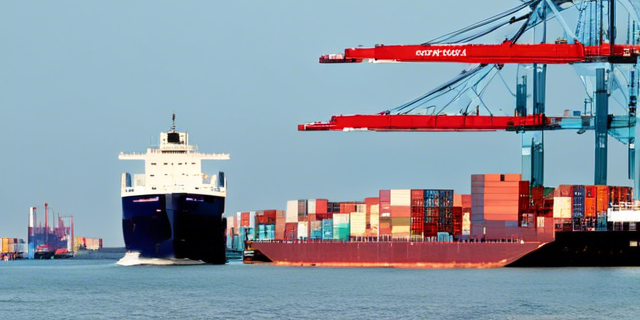
The landscape of global supply chains has encountered unprecedented challenges in the wake of the pandemic, bringing to light the imperative of resilience against disruptions. This tidal wave of change has thrust into focus the vital importance of designing supply chains that are not just efficient but also robust enough to withstand global shocks. The key to thriving in this updated context is not merely to recover to pre-pandemic operation levels but to adapt, innovate, and forge paths towards sustainability and resilience. As the world grapples with these shifts, understanding the impact and necessary adaptations becomes crucial for businesses aiming for long-term success.
This blog will delve into the profound effects the pandemic has had on global supply chains, highlighting the disruptions that have prompted widespread reevaluation of supply chain logistics and strategies. It will further explore how organizations are adapting to this post-pandemic world, learning from industry leaders who have successfully navigated these changes. The subsequent discussion will focus on the strategies and practices being employed to prepare for future uncertainties, outlining steps that businesses can take to bolster their supply chain resilience. Through this exploration, the article will offer insights into the evolving landscape of global supply chains in the post-pandemic era, presenting a roadmap for businesses looking to adapt and thrive amidst ongoing challenges.
Impact of the Pandemic on Global Supply Chains
Economic Impact
The economic ramifications of the COVID-19 pandemic on global supply chains have been profound. A significant downturn in consumer demand for in-person services rapidly shifted towards goods, exacerbating supply shocks and generating inflationary pressures across the global economy. As suppliers struggled to meet this elevated demand, the fragility of highly efficient global supply chains was starkly revealed. For instance, during the pandemic, the spot shipping prices for containers from China to U.S. West Coast ports surged to more than 1000 percent of 2019 levels. Additionally, sectoral global supply chain bottlenecks contributed significantly to observed U.S. inflation from 2021 to 2022.
Operational Impact
Operationally, the pandemic led to widespread disruptions in global supply chain activities. Many countries implemented border closures, severely affecting supply chains globally, particularly evident in sectors like food supply in Europe and automobile parts in the U.S. These closures, combined with panic-buying and significant demand fluctuations, underscored the need for global supply chains to be more agile and resilient. The introduction of digital and autonomous technologies has been accelerated, aiming to create more efficient and optimized supply chains. By 2035, it is expected that 45% of supply chains will be mostly autonomous, utilizing technologies like AI to make predictive decisions and immediately adjust supply plans in response to changes in customer demand.
Key Adaptations in Post-Pandemic Supply Chains
Technology and Automation
In response to the disruptions caused by the pandemic, companies have accelerated the integration of advanced technologies such as Artificial Intelligence (AI), the Internet of Things (IoT), and Blockchain into their supply chains. These technologies enhance real-time visibility, predictive analytics, and control, allowing businesses to respond proactively to sudden changes and optimize decision-making. For instance, AI and IoT are being used to automate tasks and improve efficiency, which not only reduces costs but also enhances supply chain resilience.
Building Operational Resilience
Businesses are focusing on building operational resilience by diversifying their supplier bases and investing in digital technologies. By sourcing from multiple suppliers and locations, companies mitigate risks and ensure continuity of operations. Additionally, the adoption of digital solutions provides enhanced visibility and transparency across the supply chain, enabling companies to monitor inventory levels, track products, and identify potential bottlenecks . This strategic visibility is crucial for effective risk management and maintaining supply chain performance even during unforeseen disruptions.
By embracing these key adaptations, businesses are not only able to withstand current challenges but are also better prepared for future uncertainties.
Preparing for Future Uncertainties
Technological Preparedness
In the realm of global supply chains, technological advancement plays a pivotal role in enhancing resilience. Organizations are increasingly leveraging tools like Artificial Intelligence (AI), IoT sensors, and advanced analytics to gain real-time visibility and predictive capabilities. These technologies enable proactive management of potential disruptions and facilitate swift adaptation to market changes. For example, predictive data analytics software allows companies to simulate various disruption scenarios, helping to pinpoint necessary adjustments in supply chain practices.
Resilience Planning
Effective resilience planning involves a multifaceted approach to anticipate and mitigate risks. Diversification of suppliers and investment in risk management systems are critical strategies. Companies are adopting dual sourcing and increasing their inventory levels to buffer against supply chain disruptions. Additionally, implementing robust contingency plans ensures continuous operation, even during unforeseen events. These plans often include alternative supplier relationships and updated risk assessment protocols to swiftly address potential disruptions.
Conclusion
Through the exploration of the profound impacts, adaptations, and learnings in the post-pandemic era, it becomes evident that the transformation of global supply chains is not just necessary but pivotal for navigating the complexities of a rapidly evolving marketplace. The significant economic and operational impacts of the pandemic underscore the urgent need for supply chains to become more adaptable and resilient.
As companies worldwide endeavor to mitigate the risks presented by such global disruptions, the strategies and practices discussed herein will undoubtedly play a critical role in shaping a future where supply chains are not just responsive but also sustainable and efficient. By learning from the past and preparing for future uncertainties with deeper insights and strategic planning, businesses can ensure continuity, competitive advantage, and long-term success in the challenging landscape of global supply chains.

